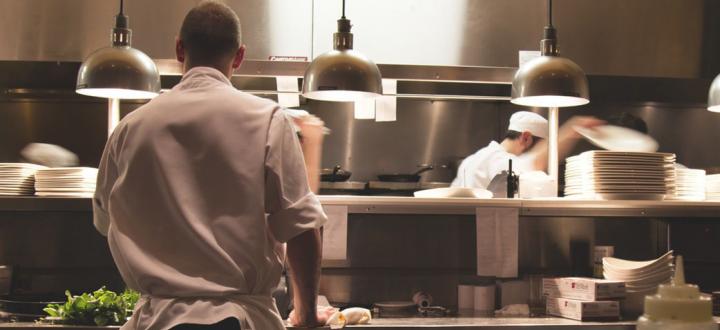
If I've heard it once I've heard it at least a thousand times: Design by committee is... a nightmare. There is "quite literally no situation in which the importance of a dozen different voices is a positive thing", or so you've been led to believe. But it is not always true the old saying about the more cooks you have in the kitchen the worse the soup.
In fact there are some situations where the more people you have the better the product. And this is where we find ourselves today with the world of open source, or crowd-sourced platforms. It seems we are living in an age were everything is crowd-sourced. A place where the voice of the larger community dictates the future of the product. And for the most part we appreciate and we enjoy this increased insight and ability to influence the future of a product, platform, or service.
But I think there's one place where we have not yet fully understood or grasped the true power of crowdsourcing. And this concept of crowdsourced creativity should not be timidly avoided. We need to examine how to unlock the true power of crowdsourcing and community when it comes to our creativity.
What Creativity Is Not.
Before we get into crowdsourced creativity it would behoove us to look at what creativity is not. Here are three short thoughts about what creativity is not. First, creativity is not one, single idea. In fact creativity is the combination of many ideas. It's the culmination of discussions, of debate, of animated talk, idle conversations and moments of deep thought. The idea that creativity is a flash of brilliance, or a stroke of genius, is a gross misunderstanding of creativity.
Secondly, creativity is not leaderless. Creativity does not involve a lack of leadership, guidance, and direction. Guided creative sessions are always the best way. Blind, aimless wanderings will struggle to yield the same benefits. The notion that creativity is “free” and “unmanaged” is another way of looking at this. This notion is a myth. Creativity requires leadership.
Lastly, creativity is not static. Creativity is a dynamic process. Creativity does not get stuck any single form, encapsulated in a single idea, or stagnate, never to be improved upon. The best examples of creativity involve an evolving continually improving way of thinking. Creativity doesn’t sit still.
What Creativity Is.
Next we look at what creativity is. Creativity is the aggregate of information collected and combined from a variety of resources, ideas, thoughts, dreams, and aspirations. Creativity is encouraged by visionary leaders who want to see something changed, something improved, the world moved. Creativity, as everything else in life, changes. Creativity should grow and improve over time.
4 Key Requirements
Knowing this, we ask the question: what are the requirements to see creativity be successful in a crowdsourced community environment? I believe there are four key requirements for crowdsourced creativity to be truly successful.
Trust
The first requirement for successful creativity in a community is trust. Without trust your volunteers and community members will feel timid, shy, and unwilling to share their ideas, thoughts, and feelings for fear of being rejected, ridiculed, or mocked. Trust must be established. There must be a sense of safety in a community, a safe environment where each individual has the ability to be oneself.
Respect
The second requirement for success is respect. This follows along quite nicely with the first because when you respect someone you give them a sense of trust. And you feel trusted. Mutual respect encourages that trust. Respect plays a role in crowd source creativity. This isn't always easy but it is always required. Maturity and the ability to rise above differences to listen to those differences without reacting aggressively is a difficult but necessary skill to learn. When you have the ability to respect someone else's views and opinions that differ from your own and not harshly judge them this respect them you build the relationship, a relationship built on trust.
"The test of a first-rate intelligence is the ability to hold two opposed ideas in mind at the same time and still retain the ability to function."
- F. Scott Fitzgerald
Communication
The third requirement for success is communication. I would go so far as to say open communication. Because what good are your thoughts and ideas and feelings if they're not shared? You must be able to share those. You must be able to communicate what you're thinking and feeling. The creativity as it strikes you must be communicated to others in the community. I reflect back to the idea of building culture. Remember, that building culture does not begin, your “things” don’t affect culture until they are shared with others. The cultural goods you create are nothing if they aren't shared. You may as well be creating them in a vacuum or void.
Goal Setting
The final requirement we focus on for community creativity to be successful relate to goals. Meaningful, relevant goals. This is how you drive your creativity towards a solution. And yes, even something as ephemeral as creativity, should have goals. Now your goals don't necessarily need to be increasing revenues by 5%, or generating a higher ROI on a landing page. Goals can be much simpler and less tangible while still being relevant and meaningful.
Community Appplication
If those are the requirements for crowdsourced creativity to be successful then here are the ways we can put those into practice within the community.
Reiteration
Reiteration, or the continued expression of those ideas or goals what you previously have defined and shared within the community is a very practical way to encourage crowdsourced creativity. When you reiterate an idea for a creative piece of work you will inevitably refine that idea. You'll find a better way to structure a sentence, or turn a phrase, or share the passion behind what you are thinking. Re-iteration is fundamental to a good crowd sourced creative environment.
Recognition
When working in a community an incredibly critical part of community growth is the continued recognition, awareness, and intentional engagement of newcomers. Your community is only as successful as individuals who make it up. Your community growth is only as successful as the newcomers to your community. If you want your community to be successful you need to make sure the individuals are successful. And newcomers are a critical part of this entire experience. Recognizing that the newcomers don't fully understand the ideas and creative processes which occurred before their arrival will lead you to implementing a better open dialogue. Reiteration of goals is helpful also in the establishment of respect and trust.
Culture
Lastly, as I touched on briefly before, crowdsourced creativity is cultural. You will have differences of opinions. You will have different ideas. You will have differing views on the best approach to solving problem, to share an idea, or to instill passion. The best way to ensure that your crowdsourced creative outlets are aligned, is to ensure there is a shared central belief. And that is the definition of culture. As a result, crowdsourced creativity is at its most extreme, most raw, most fundamental layer: cultural. So establish your culture well. Create your culture well.
Invite newcomers to your community with open arms and treat them with respect. Build trust as you communicate with them the ideas you've had in the past. Share the creative sparks of inspiration which have made your community successful and encourage them to become involved. Encourage them to share their own sparks of brilliance. Remember, creativity is not stagnant. The surest way for your community to die as for your creativity to die. And so ultimately you should encourage crowd-sourced creativity; your future depends on it.


